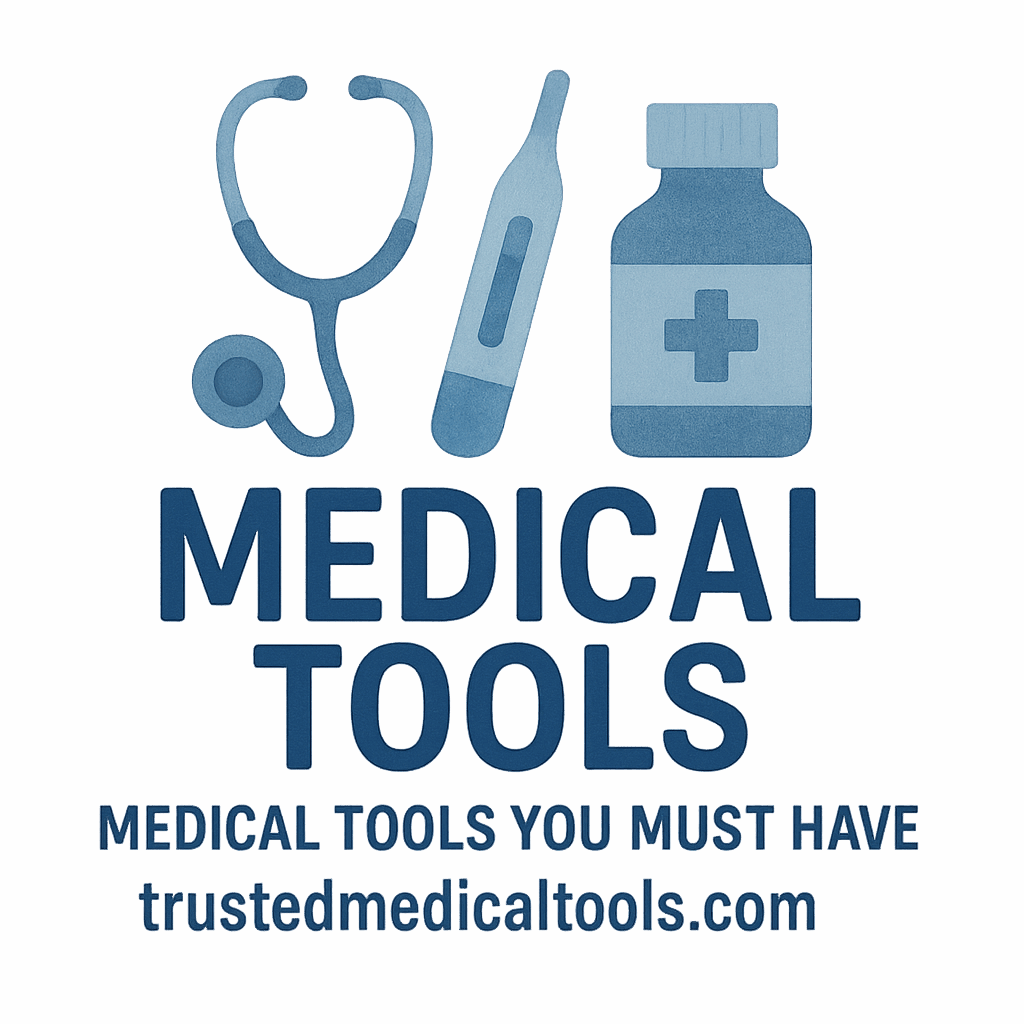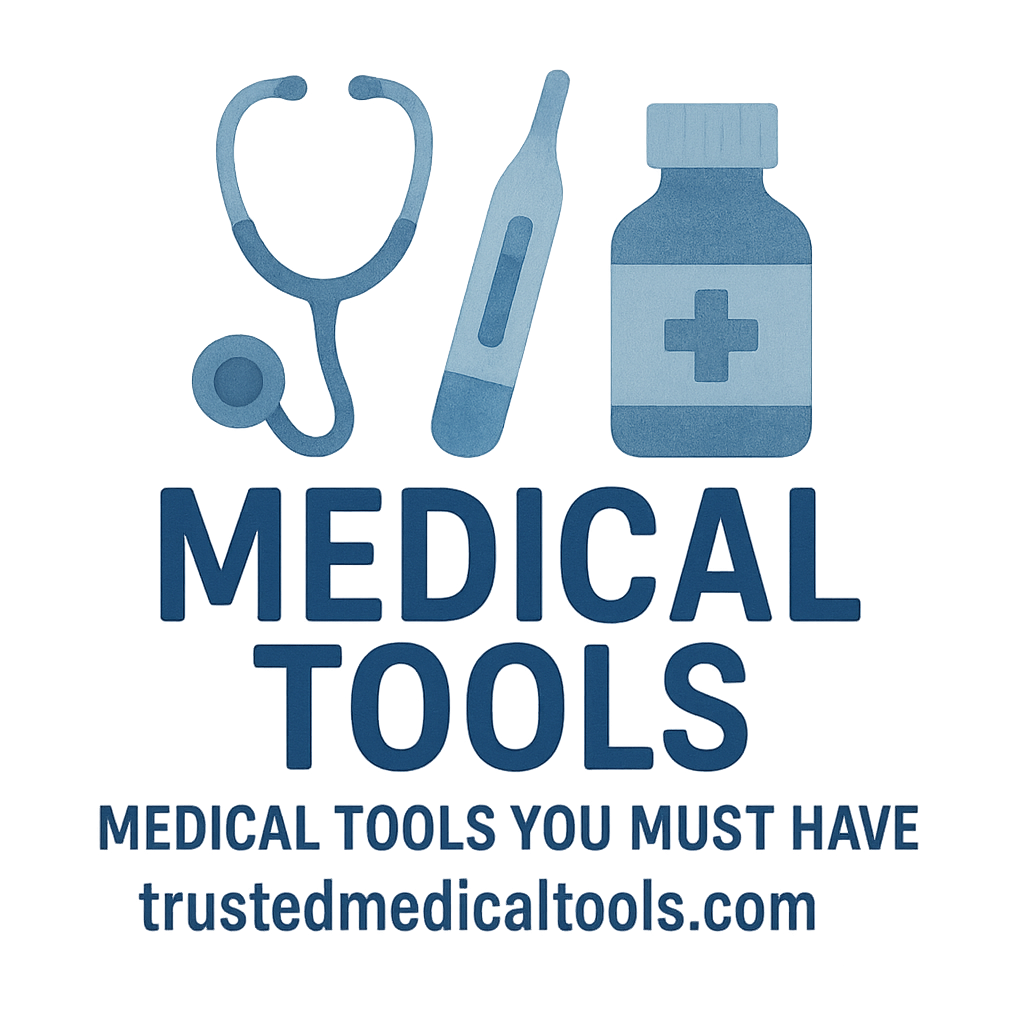Introduction
In today’s fast-paced world, keeping track of your health from the comfort of your own home has never been easier. With advancements in technology, a wide variety of easy-to-use medical tools are available to help you monitor your health and wellbeing. Whether you’re keeping an eye on your blood pressure, tracking your weight, or making sure your body temperature is normal, these tools can give you a good snapshot of your overall health.
Regular home health checks can help detect potential issues early, prevent health complications, and keep you feeling your best. In this article, we’ll explore six easy-to-use medical tools for home health checks that can make self-monitoring a breeze.
Why Home Health Checks Matter
Taking control of your health doesn’t mean you need to visit a doctor for every little concern. Home health tools enable you to track vital health indicators and provide peace of mind. They’re especially useful for managing chronic conditions or staying proactive about your wellness. These tools are designed to be simple to use, affordable, and effective for anyone, regardless of age or health background.
1. Blood Pressure Monitor
How to Use a Blood Pressure Monitor at Home
A blood pressure monitor is one of the most essential tools for monitoring your heart health at home. It’s particularly useful for individuals with high blood pressure (hypertension) or those at risk of developing it. Many modern devices are automatic, requiring minimal effort.
To use a blood pressure monitor:
- Sit in a relaxed position with your back supported and feet flat on the floor.
- Place the cuff around your upper arm, just above your elbow, and ensure it’s snug but not tight.
- Press the start button on your digital monitor, which will inflate the cuff and measure your blood pressure.
Benefits of Regular Blood Pressure Monitoring
Regular monitoring of your blood pressure helps identify issues early, especially if you’re dealing with conditions like heart disease or diabetes. High blood pressure can go unnoticed without symptoms, which is why having a device at home is crucial. For an added level of accuracy, keep a record of your measurements and share them with your healthcare provider.
You can also explore blood pressure monitors that fit into your home health care setup, providing insights into your cardiovascular well-being.
2. Thermometer
Different Types of Thermometers for Home Use
A thermometer is a must-have in any home health toolkit. While fever is often a sign of infection or illness, a thermometer helps provide a more accurate picture of your body’s internal temperature.
There are various types of thermometers:
- Digital Thermometers: Fast, accurate, and easy to use.
- Ear Thermometers (Tympanic Thermometers): Great for quick measurements, especially for children.
- Forehead Thermometers (Temporal Artery Thermometers): Non-invasive and easy to read.
How to Use a Digital Thermometer Properly
To use a digital thermometer:
- Clean the probe before use.
- Place it under your tongue, in the ear, or on your forehead (depending on the model).
- Wait for the beep or display to show your temperature.
A thermometer is an excellent tool for managing health in the family, especially when monitoring for things like fever or cold.
3. Pulse Oximeter
What is a Pulse Oximeter and Why Should You Use It?
A pulse oximeter is a small, non-invasive device that measures the oxygen saturation level of your blood. It’s especially useful for those with respiratory conditions like asthma or COPD (Chronic Obstructive Pulmonary Disease).
The device works by clipping onto your finger, where it shines a light through your skin to measure the oxygen levels in your blood.
How to Measure Oxygen Levels at Home
To use a pulse oximeter:
- Place your finger in the device.
- Wait for a few seconds until the reading stabilizes.
- Check the percentage displayed—anything under 90% may require medical attention.
This tool can provide valuable insights into how well your body is oxygenating, and it’s particularly useful in monitoring respiratory health.

4. Glucometer (Blood Sugar Monitor)
The Importance of Monitoring Blood Sugar Levels
For individuals living with diabetes or at risk of developing it, a glucometer is an essential tool. Regularly checking your blood sugar levels helps you manage your condition and prevent complications. It’s an easy way to track how your diet and medication are affecting your glucose levels.
How to Use a Glucometer for Accurate Readings
To use a glucometer:
- Wash your hands to ensure accuracy.
- Insert a test strip into the device.
- Use the provided lancet to prick your fingertip and draw a small blood sample.
- Place the blood sample on the test strip and wait for the reading to appear.
Consistent monitoring helps avoid health crises and ensures that your blood sugar stays within safe levels. It’s essential for those managing DIY health checks or for anyone tracking their health equipment for better wellness.
5. Stethoscope
Using a Stethoscope to Listen to Heart and Lung Sounds
A stethoscope is a classic tool used by doctors to listen to heartbeats, lung sounds, and bowel movements. It’s incredibly useful at home if you want to monitor your heart health and respiratory system.
To use a stethoscope:
- Place the ear tips in your ears.
- Place the chest piece (the round part) on the area you want to listen to, such as your chest or back.
- Listen for any abnormal sounds like irregular heartbeats, wheezing, or crackling.
This tool is particularly helpful for families managing home care or for those tracking general health.
Tips for Proper Stethoscope Use at Home
Ensure the stethoscope fits properly and you’re in a quiet environment. It might take some practice, but soon enough, you’ll be able to detect any unusual sounds in the body.
6. Digital Weighing Scale
How to Track Your Weight and Body Mass Index (BMI)
A digital weighing scale is a great tool for tracking your weight and calculating your BMI. It helps you monitor weight fluctuations, which can signal changes in your health. Regular tracking can also aid in weight management and overall wellness.
The Importance of Monitoring Weight Regularly
Weighing yourself regularly helps you understand trends in your weight and can highlight the need for lifestyle changes. If you’re working on managing your weight or dealing with conditions like obesity, monitoring is crucial.
You can also track your weight as part of your health equipment for home health checks. Consider scales that provide additional measurements like body fat percentage or water weight.
Conclusion
Taking charge of your health doesn’t require a trip to the doctor’s office every time something feels off. These six easy-to-use medical tools allow you to monitor important aspects of your health at home, empowering you to catch any early signs of potential issues before they become serious. Whether you’re checking your blood pressure, measuring your temperature, or tracking your weight, these devices can provide peace of mind and support better health management.
Remember, these tools are most effective when used regularly. Make sure to keep your health equipment well-maintained, follow the instructions, and share your results with a healthcare professional for personalized advice.
FAQs
- Can I trust home health monitoring tools?
Yes, as long as you follow the instructions properly, these tools can be very accurate. It’s also important to maintain them and replace batteries or parts when necessary. - How often should I check my blood pressure at home?
It depends on your health condition, but typically, it’s recommended to check it at least once a day if you have hypertension or are at risk. - Do I need to see a doctor even if I monitor my health at home?
Absolutely. Home health tools provide valuable information, but regular check-ups with your healthcare provider are still important for a comprehensive health assessment. - Can I use a stethoscope to check for heart problems?
While you can listen for abnormal sounds, a stethoscope is not a diagnostic tool. If you hear anything unusual, it’s important to consult a doctor. - Are digital weighing scales accurate?
Yes, digital scales are generally accurate, but they can be affected by factors like your position on the scale or the time of day. Always weigh yourself at the same time each day for the best results. - How do I clean my thermometer or pulse oximeter?
Simply wipe down the surface with disinfectant wipes or a cloth with alcohol. Always follow the manufacturer’s instructions. - What’s the best way to track my health at home?
A combination of tools like a blood pressure monitor, thermometer, and weighing scale is ideal for tracking various health parameters effectively.
For more tools and health tips, check out the buying guide and explore a variety of other first-aid products for your home.


